- Home
- Michael Chabon
Fight of the Century Page 3
Fight of the Century Read online
Page 3
The youngest one, brown skinned and baby-faced, was named Leroy. Andy, Clarence, and Charlie were the oldest. And between them there were Haywood, Olen, and Ozie.
And baby-faced Leroy was leaving home for the first time.
Olen, who was nearly blind. His dream—a pair of glasses.
This wasn’t in the musical. The story of a boy so blind he had to leave home, steal a ride on a train with the hopes of a job. With the hopes of one day seeing.
* * *
How do we begin to tell this country’s story without turning our own selves inside out?
In 1992, my college boyfriend died from the complications of AIDS. I was living on Cape Cod by then. By then, I had long cut off the damaged processed hair of my college days and grown it back as locs. When I remembered college, I remembered The Birth of a Nation and Dr. Jackson and the dividing line between the many white cheerleaders and the three black ones.
In an article that ran in Life magazine (1937), Eugene was described as a “sullen, shifty mulatto.” What thirteen-year-old isn’t sullen?
Mulatto: The term may derive from mula (current Portuguese word, from the Latin mūlus), meaning mule, the hybrid offspring of a horse and a donkey.
I know I know: Don’t trust Wiki. Whatever.
Remember Leroy? Here’s an excerpt of the letter he wrote to his mama: “I am all lonely and thinking of you.… I feel like I can eat some of your cooking Mom.” Some sources say he was twelve. Some thirteen.
But the boys were from Scottsboro.
And this is America.
And the truth is never where it’s supposed to be.
So shucks, y’all.
Let’s all just keep smiling and dancing.
Smiling and dancing.
UNITED STATES V. ONE BOOK CALLED “ULYSSES” (1933)
United States v. One Book Called “Ulysses” marked an early case against government censorship. Arguing on behalf of Random House, ACLU cofounder Morris Ernst persuaded the District Court for the Southern District of New York that James Joyce’s masterpiece was not obscene and therefore was importable under the Tariff Act of 1930. The Second Circuit affirmed the district court’s decision in 1934. As a result, the book became widely published in the United States for the first time.
The outcome in the Ulysses test case did not involve the First Amendment, and, at least in the short term, its legal implications were negligible. Nevertheless, Ulysses laid the groundwork for future challenges to banned books and articulated a speech-protective standard for what constitutes obscenity, a standard that would later influence the Supreme Court.
The Dirtiest, Most Indecent, Obscene Thing Ever Written
MICHAEL CHABON
It was a setup: a stratagem worthy of wily Ulysses himself.
The conspirators were Bennett Cerf, publisher and cofounder of Random House, and Morris Ernst, a pioneer of the ACLU and its chief legal counsel. The target was United States antiobscenity law. The bait was a single copy of an English-language novel, printed in Dijon by Frenchmen who could not understand a word of it, bound in bright blue boards, and sold mail-order by the celebrated Paris bookshop Shakespeare & Company. When Cerf and Ernst first began to conspire in 1931, the novel, James Joyce’s Ulysses, was the most notorious book in the world.
“It is,” the editor of the London Sunday Express had written nine years earlier, sounding like H.P. Lovecraft describing Necronomicon:
the most infamously obscene book in ancient or modern literature.… All the secret sewers of vice are canalized in its flood of unimaginable thoughts, images and pornographic words. And its unclean lunacies are larded with appalling and revolting blasphemies directed against the Christian religion and against the name of Christ—blasphemies hitherto associated with the most degraded orgies of Satanism and the Black Mass.
Regarded as a masterpiece by contemporary writers such as T.S. Eliot and Ernest Hemingway, celebrated for being as difficult to read as to obtain, Ulysses had been shocking the sensibilities of critics, censors, and readers from the moment it began to see print between 1918 and 1920, when four chapters were abortively serialized in the pages of a New York quarterly called The Little Review. Even sophisticated readers often found themselves recoiling in Lovecraftian dread from contact with its pages. “I can’t get over the feeling,” wrote Katherine Mansfield, “of wet linoleum and unemptied pails and far worse horrors in the house of [Joyce’s] mind.” Encyclopedic in its use of detail and allusion, orchestral in its multiplicity of voices and rhetorical strategies, virtuosic in its technique, Ulysses was a thoroughly modernist production, exhibiting—sometimes within a single chapter or a single paragraph—the vandalistic glee of futurism, the decentered subjectivity of cubism, the absurdist blasphemies and pranks of dadaism, and surrealism’s penchant for finding the mythic in the ordinary and the primitive in the low dives and nighttowns of the city.
It was not the book’s flamboyant modernism, however, that shocked and repulsed Mansfield and other early readers, among them Virginia Woolf, George Bernard Shaw, W.B. Yeats, and, of all people, D.H. Lawrence, who called its celebrated final chapter, “Penelope,” “the dirtiest, most indecent, obscene thing ever written.” Critics were not scandalized by the way Joyce represented his protagonists by means of discontinuous interwoven strands of interior monologue and sensory perception, nor by his narrowing of the massive novel’s action to the span of a single June day in 1904. And when the upstanding bullies of the New York Society for the Suppression of Vice (NYSSV) had intervened in 1921 to bring federal charges against The Little Review after it published the novel’s “Nausicaa” chapter—ensuring that Ulysses was thereafter effectively banned in the US—it was not because they objected to Joyce’s depicting Homer’s lissome Phaeacian nymph as a disabled working-class young Irishwoman or bold Odysseus as a timorous middle-aged Jewish seller of newspaper ads.
The source of the “horrors” that Ulysses aroused, in Mansfield, critics, and censors alike, lay in those “unemptied pails.” Ulysses was the first modern novel of indisputable literary intent to explicitly depict its characters engaging in the universal bodily routines of human beings—shitting, fucking, farting, jerking off, etc.—and, perhaps even more shockingly, the first to affirm, often in the coarsest terms, that when they were not engaged in those activities, they spent a good deal of their time thinking about engaging in them.
In considering the case brought by the NYSSV against the publishers of The Little Review in 1921, the Supreme Court of New York had affirmed that while Ulysses might well be considered literature by certain types of dissolute, shiftless, intellectual aesthetes with anarchist politics and slovenly habits, it was also, patently and unquestionably, obscene. To publish, sell, or purchase it, or to import it into the United States, therefore, was a crime. All the offending numbers of The Little Review were burned, and over the next dozen years, here and in the United Kingdom (whose censors took their cue from the New York decision), hundreds, perhaps thousands of copies of the novel, whether imported from Paris or pirated locally, were consigned to what the British called “the King’s Chimney.”
Naturally, the relentless campaign to extirpate a book so pornographic that no one was allowed even to see or touch it, let alone read it, created a lively appetite for Ulysses among the reading public. With supply lines between Paris and the United States constantly threatened by the zealous activity of customs agents, opportunists stepped in, with their pirate presses, to satisfy that appetite. Foremost among the pirates of Ulysses was the legendary New York pornographer Samuel Roth. A semitragic, almost Dostoevskian figure, widely reviled, often imprisoned, a lifelong Orthodox Jew who wrote the notorious anti-Semitic screed Jews Must Live, Roth was a would-be modernist poet whose keen literary eye and canny sense of the marketplace were matched only by the unhappy mixture of bad luck and compulsive behavior that drove him to ply his trade in the sordid shadows of the New York publishing world.
Roth—who would go on to encounter succes
s with a pirated edition of Lady Chatterley’s Lover and a federal prison sentence in the mid-1950s, and whose 1957 Supreme Court case, Roth v. United States, would itself become a landmark in the history of First Amendment protection for obscene speech—brought out his unlicensed Ulysses starting in 1926. It was not, due to a technicality in US copyright law, truly a pirated edition, but it was printed without consent of or payment to the author. James Joyce and Sylvia Beach, the owner of Shakespeare & Company who had risked so much, personally and financially, to bring Joyce’s masterpiece to the world, viewed its publication with alarm.
The New York publishing establishment, for its part, viewed the success of Roth’s Ulysses with something closer to a covetous leer. Throughout the late 1920s, many of the most prominent publishing houses had flirted with or seriously explored the possibility of coming to terms with Joyce and of braving the prosecution that would likely if not inevitably follow publication of the most infamously obscene book in ancient or modern literature. But even publishers with the stomach for litigation were unwilling to stomach the noxious financial terms demanded by the resolute Beach, to whom Joyce had assigned control over the Ulysses rights—or perhaps it was simply that the gentlemen publishers of that time were too sexist to negotiate with a woman. Interest among the major houses faded away, and as the 1930s began, the US market remained wide open for exploitation by Roth, who was widely rumored to be preparing a second unlicensed edition. Joyce, contemplating from the photophobic gloom of his latest fugitive Paris apartment the prospect of never making a dime from the work that had cost him his eyesight, his health, and eight years of his life, felt his own financial resolve begin to weaken.
Two erudite, polished, and well-connected New York hustlers caught wind—or maybe it was simply an intuition, a canny surmise—of this wavering, and saw in it, as hustlers so often do in the face of weakness, an opportunity. One of these bon vivants was Bennett Cerf, then in his early thirties. Eight years earlier, Cerf had ditched a career in his Alsatian Jewish father’s Harlem lithography business, using twenty-five thousand dollars inherited from his tobacco-heiress mother to buy himself a partnership in the celebrated New York publishing firm of Boni & Liveright. Eager, savvy, impulsive, and, like any good hustler, trusting implicitly in his own judgment, Cerf seized on his new partner Horace Liveright’s financial straits to cut a deal and buy him out of the Modern Library, an imprint that Cerf astutely recognized as the hidden jewel of Boni & Liveright.
The books on the Modern Library’s list of “modern classics” tended to have gone out of print or to have entered the public domain, which made them cheap to publishers and affordable to readers, even in the thick of the Great Depression. Building on the Modern Library’s success, Cerf and Donald Klopfer, his boyhood friend and business partner, expanded into publishing new work by contemporary authors, chosen “at random,” under the sobriquet of Random House. But if Random House were going to compete with the big houses, it needed a big hit. It needed to make a literary splash. It needed, Cerf decided, the dirtiest, most indecent, obscene thing ever written. He knew—publishers had known for years—that if you could somehow contrive to get around the obscenity problem, you could sell a million, or at least several hundred thousand, of the damn thing.
Pondering the question, trusting in his judgment but acutely conscious of the risk that must be courted, Cerf reached out in 1931 to that second erudite, polished, and well-connected New York hustler. An Alabama-born Jewish peddler’s son, Morris Ernst had hustled his way through Horace Mann, Williams College, and night school at New York Law, idolized Louis Brandeis, oozed left-wing American patriotism of a kind all but forgotten today,* and had a table at 21.
Ernst dressed like a college professor, favoring bow ties and tweed jackets, but he was known, and much sought-after, as a gifted, skilled, and cagey courtroom attorney with a discerning eye for the kinds of cases that could change the law if you won them. He was thrilled to hear that Cerf intended to storm the grim edifice of Comstockery in which, for decades, a venerable legal standard known as the Hicklin test had kept art and literature imprisoned, jailing them indiscriminately along with naughty French postcards, racy English paeans to spanking and buggery, and guides to “marital hygiene.” An admirer of Joyce and his work, a fierce First Amendment absolutist, and an experienced, battle-hardened defender of dirty books, Ernst could not resist the challenge that Cerf handed him, along with—once the two hustlers had finished working each other over—a 5 percent share in sales (if any) of the novel. Ernst, in return, agreed to forgo his standard fee. He was, like Cerf, and Joyce, and Beach, a taker of chances.
In the end, curiously, the strategy devised by Ernst and his associate Alexander Lindey entirely sidestepped the First Amendment. Over the previous sixty years the Supreme Court had consistently upheld the constitutionality of the federal Comstock Act, which banned obscene speech. The New York State antipornography laws were broad, loose, and vaguely worded. And the standard used to determine whether speech was obscene, the Hicklin test, appeared to be invincible.
The Hicklin test, arising out of an 1868 British case, Regina v. Hicklin, defined and permitted the banning of obscene works when they tended “to deprave and corrupt those whose minds [were] open to such immoral influences, and into whose hands a publication of this sort [might] fall.” (Enemies of obscenity have always unselfishly shown greater concern for the corruptibility of others than for their own.) The book at question in Regina v. Hicklin was not, strictly speaking, pornography but an anti-Catholic diatribe, The Confessional Unmask’d, a pamphlet adorned with a number of salacious passages purporting to be the first-person accounts of apostates, former nuns, etc., giving eyewitness to the “depravities” of the Church. The presence of these passages, ruled the court in Hicklin, was sufficient to render the whole pamphlet obscene. This was what made the Hicklin test so dangerous to a work like Ulysses: it could be applied piecemeal. The government had only to prove the obscenity of part of a book in order to ban it entirely. There was no obligation to consider context or the intentions of a work as a whole. A condemned book was hung, as it were, by its dirty parts.
There was one other problem with challenging obscenity law on the basis of the First Amendment: Cerf would actually have to publish the book first. He would have to license it from the author, advertise and solicit orders for it, typeset and print it, and ship it to booksellers. All that would cost money and labor and then, after he had spent tens of thousands of dollars, the court might very well rule against him, leaving Ulysses to the tender mercies of a bunch of vice squad bravos carrying cans of kerosene. But there was no other way to do it; to find out if speech was protected or not, one was obliged, first of all, to speak.
This was not Ernst’s first obscenity trial—far from it—and his experience had led to an understanding that the smartest way to come at a judge, if you could find yourself a sympathetic one, was through the Tariff Act of 1930. The Tariff Act, among many other provisions having nothing to do with suppressing the trade in pornography, empowered federal customs agents to seize obscene books as contraband, impound them, and—as ever—incinerate them.
A challenge to the Tariff Act, though it would not afford an opportunity to change the way the law looked at obscene speech from the perspective of the First Amendment, offered three evident advantages: first, the definition of obscenity under the act was clearer and less confusing than the definition that applied in a First Amendment case. Second, but no less appealing, taking on the Tariff Act would be a lot cheaper; Random House would not have to print a single copy. All one needed to do, to invite the scrutiny of the Customs Bureau, was purchase a copy of the book and have it shipped through a US port of entry. One copy was sufficient—if discovered, it would be seized, and the US attorney would then bring suit against it. Against it—that individual copy of Ulysses. The defendant in the case would not be Random House, or Bennett Cerf, or James Joyce. The defendant would be that lone, waylaid copy of the book—henc
e the name of the case, United States v. One Book Called “Ulysses.”
This was the third and final advantage of going the Tariff Act route: the act contained a provision specifying that in the event of seizure, suit would be brought against the seized work itself. This practice, common in admiralty law and in forfeiture cases, derives from the courts’ jurisdiction in rem, over things and property, and has brought us some of the most amusing case names in the history of American jurisprudence, among them United States v. Forty Barrels & Twenty Kegs of Coca-Cola, United States v. 11 ¼ Dozen Packages of Articles Labeled in Part Mrs. Moffat’s Shoo-Fly Powders for Drunkenness, and, of course, United States v. One Solid Gold Object in Form of a Rooster.
So Cerf and Joyce came to terms on rights and royalties, and Cerf arranged for Joyce’s assistant, Paul Léon, to purchase a copy of the book from Shakespeare & Company and send it, in the baggage of a willing confederate, to the Random House offices.
Ernst now made three further opening moves. Each formed a crucial part of his overall strategy for winning the case, which was to persuade a judge that Ulysses ought not to be evaluated solely on the basis of its “dirty parts” but in its entirety, as a work of literature, a “modern classic”—and therefore, by definition, not obscene.
To begin with, Ernst instructed Léon to amass a number of favorable press clippings and critical assessments of the novel, along with protests and petitions against Roth’s edition drawn up by notable litterateurs, and affix them to the book itself, pasting and taping them into the covers and among the pages until it was swollen with encomiums, sympathetic analyses, and principled affirmations of Joyce’s moral rights as an author. Doing this ensured that when the book was seized, on entering the Port of New York, all the plaudits and respectful critiques would be seized along with it and duly entered as evidence in the case, thereby obliging the judge to consider them. Following the same tack—establishing Ulysses’s importance and status as literature in the eyes of serious-minded readers—Ernst started a campaign to solicit the written opinions of librarians across the United States, so that these, too, could be entered into evidence.

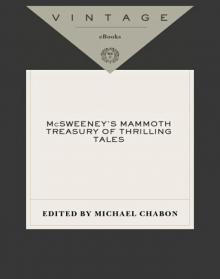 McSweeney's Mammoth Treasury of Thrilling Tales
McSweeney's Mammoth Treasury of Thrilling Tales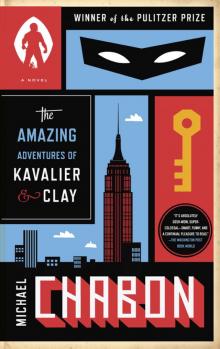 The Amazing Adventures of Kavalier & Clay
The Amazing Adventures of Kavalier & Clay The Yiddish Policemen's Union
The Yiddish Policemen's Union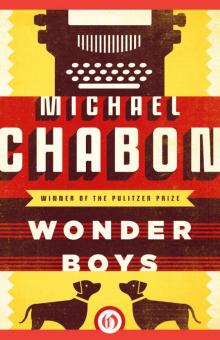 Wonder Boys
Wonder Boys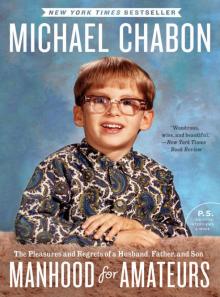 Manhood for Amateurs
Manhood for Amateurs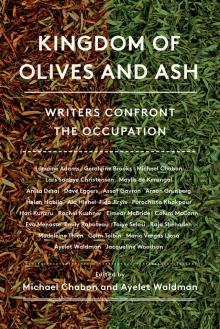 Kingdom of Olives and Ash: Writers Confront the Occupation
Kingdom of Olives and Ash: Writers Confront the Occupation Gentlemen of the Road: A Tale of Adventure
Gentlemen of the Road: A Tale of Adventure A Model World and Other Stories
A Model World and Other Stories Pops: Fatherhood in Pieces
Pops: Fatherhood in Pieces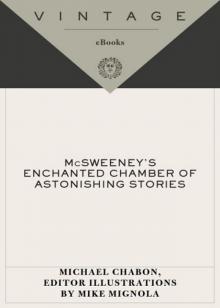 McSweeney's Enchanted Chamber of Astonishing Stories
McSweeney's Enchanted Chamber of Astonishing Stories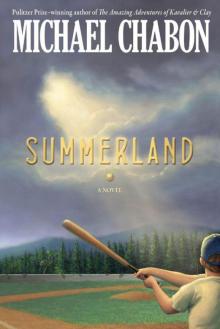 Summerland
Summerland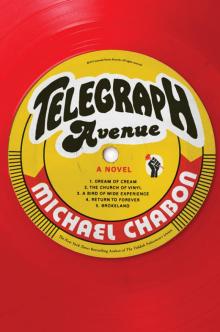 Telegraph Avenue
Telegraph Avenue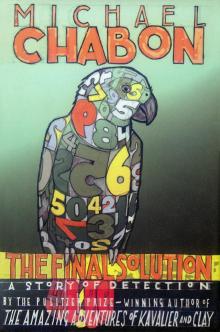 The Final Solution
The Final Solution The Mysteries of Pittsburgh
The Mysteries of Pittsburgh Werewolves in Their Youth
Werewolves in Their Youth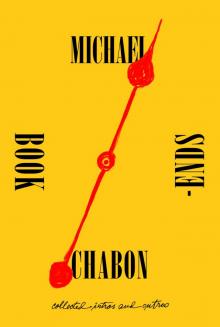 Bookends
Bookends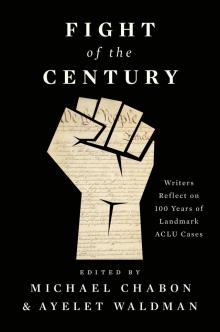 Fight of the Century
Fight of the Century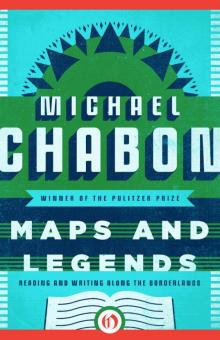 Maps and Legends
Maps and Legends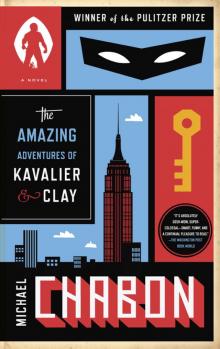 The Amazing Adventures of Kavalier & Clay (with bonus content)
The Amazing Adventures of Kavalier & Clay (with bonus content)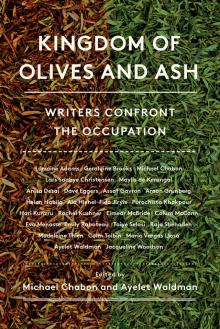 Kingdom of Olives and Ash
Kingdom of Olives and Ash Pops
Pops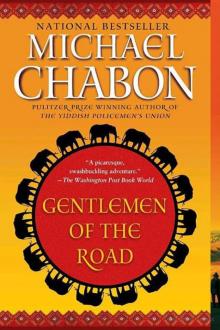 Gentlemen of the Road
Gentlemen of the Road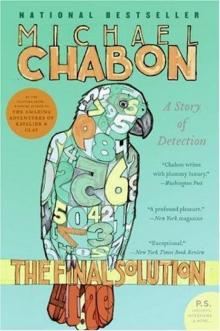 The Final Solution: A Story of Detection
The Final Solution: A Story of Detection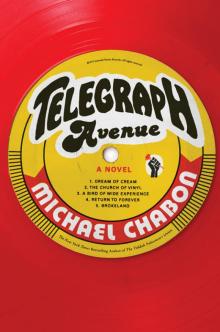 Telegraph Avenue: A Novel
Telegraph Avenue: A Novel